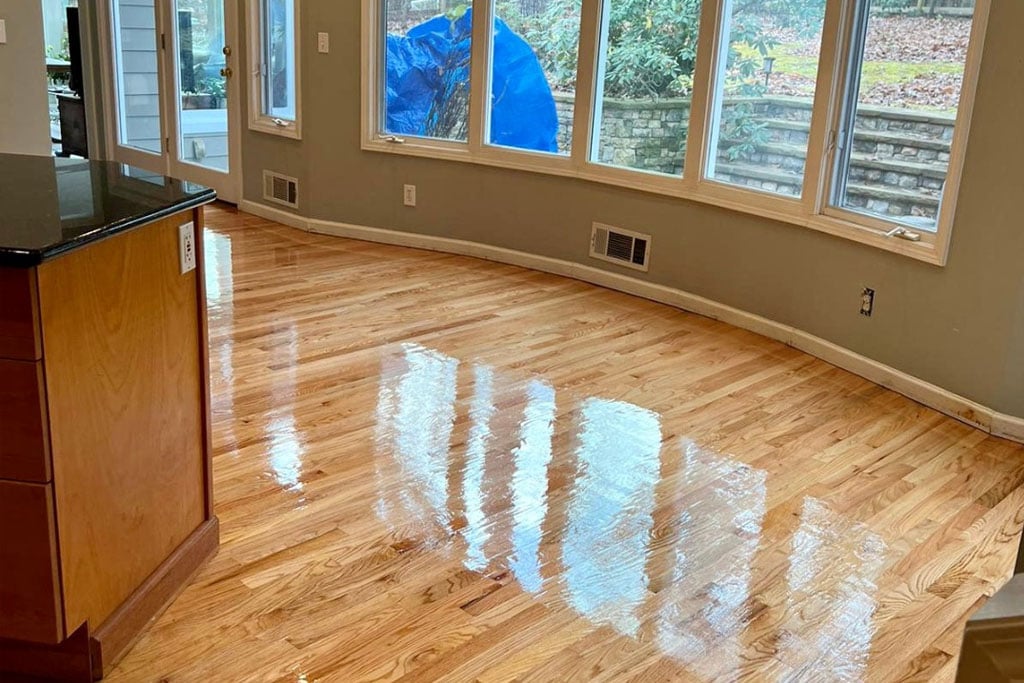The Art of Carpentry: Where Craftsmanship Meets Creative Design
Carpentry has always existed at the intersection of function and beauty. While the primary purpose of our work is to create structures that serve practical needs, there’s an undeniable artistic element to quality carpentry that separates exceptional work from the merely adequate. Beyond Basic Functionality When we approach a new project, whether it’s custom cabinetry, bespoke furniture, or architectural woodwork, we’re not simply cutting and joining pieces of timber. We’re creating pieces that will become part of someone’s daily environment, influencing how they experience their home or workspace for years to come. The grain patterns in wood, the choice of joints, the profile of a moulding, the proportions of a piece—these decisions combine technical knowledge with aesthetic sensibility. It’s this blend that transforms carpentry from a trade into a craft, and sometimes into art itself. Drawing Inspiration from the Creative World Many of Kent’s finest carpenters draw inspiration from unexpected sources. Art galleries, sculpture, and even contemporary design movements inform how we approach traditional carpentry challenges. The flowing lines of Art Nouveau might inspire the curve of a staircase handrail. The bold geometry of modernism could influence the design of built-in shelving. For those looking to explore how artistic principles can inform design thinking, resources like www.arieteart.com offer insight into how creative professionals approach form, composition, and visual impact—principles that translate surprisingly well to woodworking projects. The Carpenter’s Palette Wood itself is our primary medium, and like any artist’s palette, it offers remarkable variety. Oak provides strength and prominent grain. Walnut brings rich, dark tones. Maple offers clean, contemporary appeal. Pine delivers warmth and accessibility. Each species has its character, its personality, and choosing the right material for a project is as important as selecting the right brush for a painting. Understanding how different woods respond to tools, how they age, how they interact with light—this knowledge allows us to make informed choices that elevate our work beyond mere construction. Craftsmanship in the Details The details matter enormously in carpentry. The precision of a mitred corner, the smoothness of a hand-planed surface, the alignment of grain across multiple panels—these elements might go unnoticed by the untrained eye, but they contribute to an overall sense of quality and care. Traditional joinery techniques like dovetails, mortise and tenon, and hand-cut joints aren’t just structurally superior; they’re beautiful in their own right. There’s a reason why exposed joinery has become a popular design feature—it celebrates the marriage of form and function that defines great carpentry. Custom Work: Creating Something Unique Perhaps nowhere is the artistic element of carpentry more evident than in custom work. When a client comes to us with a vision—a specific piece of furniture, a unique storage solution, an architectural feature that doesn’t exist in any catalogue—we become collaborators in bringing that vision to life. This process requires not just technical skill but creative problem-solving, spatial awareness, and the ability to visualise finished pieces from rough sketches or verbal descriptions. We’re translating ideas into three-dimensional reality, working with a medium that’s both beautiful and unforgiving. Respecting Traditional Techniques While modern tools and technologies have expanded what’s possible in carpentry, there’s immense value in understanding and respecting traditional techniques. The methods developed over centuries weren’t arbitrary—they evolved through generations of craftspeople solving practical problems while creating lasting beauty. Hand tools, in particular, connect us to this lineage. The rhythm of a hand plane, the precision of a chisel, the satisfaction of a perfectly fitted joint created without power tools—these experiences ground us in the fundamentals of the craft. Sustainability and Beauty Today’s carpentry also involves making environmentally conscious choices. Sourcing responsibly harvested timber, minimising waste, creating pieces built to last rather than to be replaced—these practices honour both the material and the craft. There’s an inherent sustainability in creating beautiful, well-made pieces that people will treasure and maintain rather than discard. When carpentry reaches the level of art, it naturally becomes more sustainable because people value it differently. The Satisfaction of Creating For those of us who’ve chosen carpentry as our profession, there’s profound satisfaction in creating something tangible, functional, and beautiful. Unlike digital work that exists only on screens, our creations occupy physical space, can be touched and experienced, and often outlive their creators. Every project, from a simple shelf to an elaborate staircase, represents a conversation between material, maker, and purpose. When these elements align, the result transcends mere construction—it becomes something that enriches the spaces we inhabit. Looking Forward As carpentry continues to evolve with new materials, tools, and design trends, the fundamental relationship between craftsmanship and artistry remains constant. The best carpenters will always be those who see beyond the technical requirements to the aesthetic possibilities, who approach each project as an opportunity to create something not just functional, but meaningful. Whether you’re considering a carpentry project for your home or simply appreciate the craft, remember that quality work reflects both skill and vision—the perfect union of art and utility that defines exceptional carpentry.



